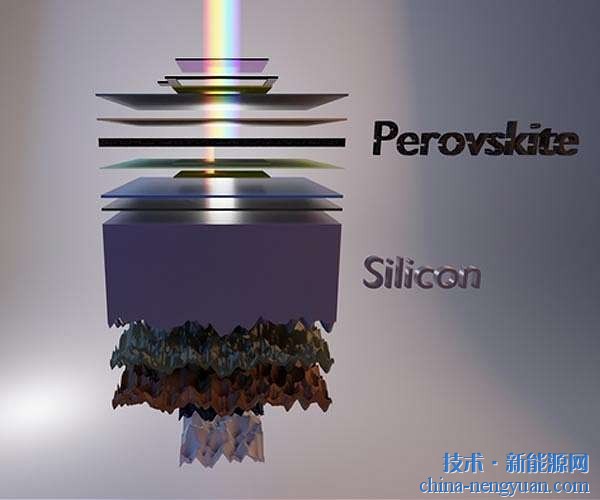The figure above shows that when the band gap is 0.92eV, the sunlight utilization rate can reach 90%. The following figure shows the structure of the new type of solar cell and the principle of charge separation. In "PV Japan 2014", the researcher of the Institute of Industrial Science at Osaka University in Japan, Masahiro Ichimura proposed a new solar cell scheme that does not use pn junctions. Ideally, this solar cell's conversion efficiency is expected to reach 70-80%. The idea of ​​the new principle is to separate the excitons (pairs of electrons and holes) using the polarity within the crystal, which is the internal electric field gradient induced by spontaneous polarization. The material Si commonly used for solar cells is not polar, but the crystals of many compounds are highly polar. When these materials absorb photons to generate excitons under the action of an internal electric field gradient, electrons and holes will spontaneously separate into different directions. According to a specific idea, the solar cell element has a structure in which an InGaN layer having a thickness of 300 nm to 350 nm and a band gap of 0.92 eV is sandwiched between the InN layer and the electrode. For a typical solar cell, separation of excitons and the transfer of electrons and holes to different electrodes are accomplished by pn junctions. Jiang Cun said that the use of an internal electric field gradient to separate excitons has many advantages. Among them, the biggest advantage is the ability to reduce the recombination of electrons and holes and thermal relaxation. For example, in general Si-type solar cells, in order to increase the light absorption rate, only the active layer often reaches tens of micrometers or more. This causes most photons with short wavelengths and high energy to become “hot excitons†away from the pn junction. Before arriving at the pn junction to separate into electrons and holes, it has been lost due to recombination and thermal relaxation. The problem with the conventional single-junction solar cell is that light having a wavelength shorter than the band gap is lost due to thermal relaxation, while light having a longer wavelength is transmitted and cannot be effectively used. This phenomenon is called "Shockley-Queisser limit" and relates to the maximum performance of a single junction solar cell. The thickness of InGaN used for the photoactive layer of the new solar cell proposed this time is 300 nm to 350 nm. According to Jiangcun, InGaN, unlike Si, is a direct migration type and has a high light absorption rate. “Only a thickness of about 100 nm can absorb 1/2 of the incident light,†and 300 nm can absorb most of the light. The distance from the layer to the electrode is also relatively short relative to the lifetime of the carrier. Therefore, "no phonons are scattered and no thermal relaxation occurs." This eliminates one of the two major causes of loss that determine the "Shockley-Queisser limit." The transmission loss of long-wavelength electromagnetic waves such as infrared rays still exists. However, by controlling the composition of In in InGaN and reducing the band gap to 0.92 eV, the energy ratio of infrared rays that cannot be used can be reduced to 10% of the total sunlight. Jiangcun said that even taking into account the losses caused by the 10% and light reflections, the overall loss can be reduced to 20 to 30%. In other words, in an ideal case, a solar cell having a conversion efficiency of 70 to 80% can be realized. However, as of now, this kind of solar cell still stays in the theoretical stage. Jiangcun said, "In the future, we must actually make components and conduct evaluations."
Characteristics and Advantages
(1) Intelligent control design: adjustable main parameter and secondary parameter automatically according to the weight of door leaves;
(2) Low noise: Special static sound track, integration of motor, worm-gear and retarder.
(3) Anti-clamping function: automatically reverse when meeting barriers;
(4) Unique electronic motor lock: the motor will lock up when the door is forced to open.(controlled by remote or switch)
(5) Tighten force: seal door when closed, power consumption approximately 10W under standby;
(6) Advanced brushless motor(36V,100W) can automatically adopt different heavy door leaves;
(7) Bi-doors inter-locking: one of the door leaves always remains closing;
(8)Safety sensor terminal: sensor stops working when door closed;
(9)Unique coating technology: never rusty;
(10)Easy and convenient to install;
(11)Working Process: when the door leaf closes to the right place, the door leaf will slightly shift to the door frame and the ground. The rubbers on the four sides of the door leaf will completely combine with door frame and ground, which ensures air tightness. When the door is open, the rubbers will separate from door frame and ground, which avoids contraction on the ground.
Technical Specification
Specification
Light Duty
Heavy Duty
Rang of the Door
Single-Leaf
Double-Leaf
Single-Leaf
Double-Leaf
Door leaf max weight
100kg
100kg x 2
200kg
200kg x 2
Mounting Method
Surface mounting or built-in mounting
Open Width
700-2000mm
650-2000mm
750-2000mm
650-2000mm
Power Supply
AC 220v ± 10%, 50-60 Hz
Opening Speed
300-500mm/s (adjustable)
Closing Speed
250-550mm/s (adjustable)
Creep speed
30-100mm/s (adjustable)
Hold-open time
0.5-20s (adjustable)
Airproof Force (Max.)
>70N
Manual Pushing Force
<100N
Electronic Lock Force
>800N
Power consumption
150W
Ambient temperature
-20+50 C
Technical Details:
(1) Rubber lining sealing technology combined with V groove on the guide rail enables the door completely sealed when the door closed;
(2)Special door body location technology. Semicircular surface beam on the ground matches with the V style groove at the bottom of door leaf, which stop the door from swing and make sure it moves stable and smooth;
(3) The door body decorated with matte stainless steel or spray surface, and on the middle and both sides with sealing stripes to ensure the hermetic effect.
(4)Feet sensor switch applied to avoid contagion;
Stainless Steel Sliding Door,Stainless Steel Bypass Sliding Door,Stainless Steel Interior Sliding Door,Stainless Steel Folding Sliding Door Shenzhen Hongfa Automatic Door Co., Ltd. , https://www.hffreezerdoor.com